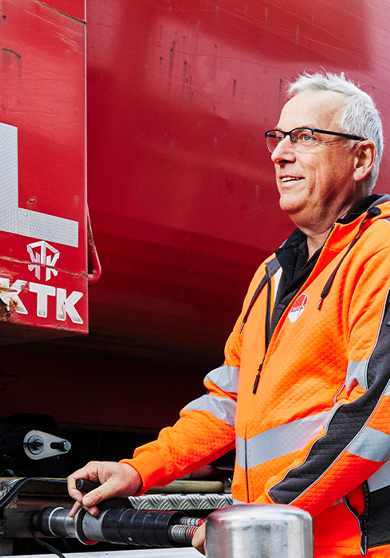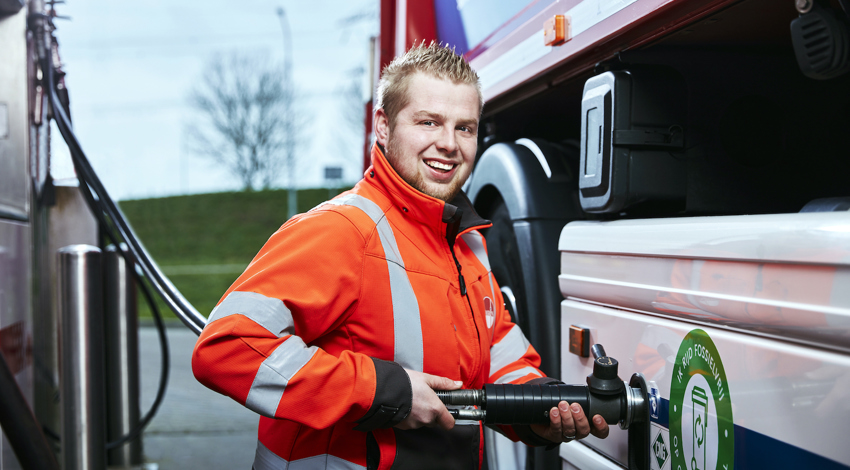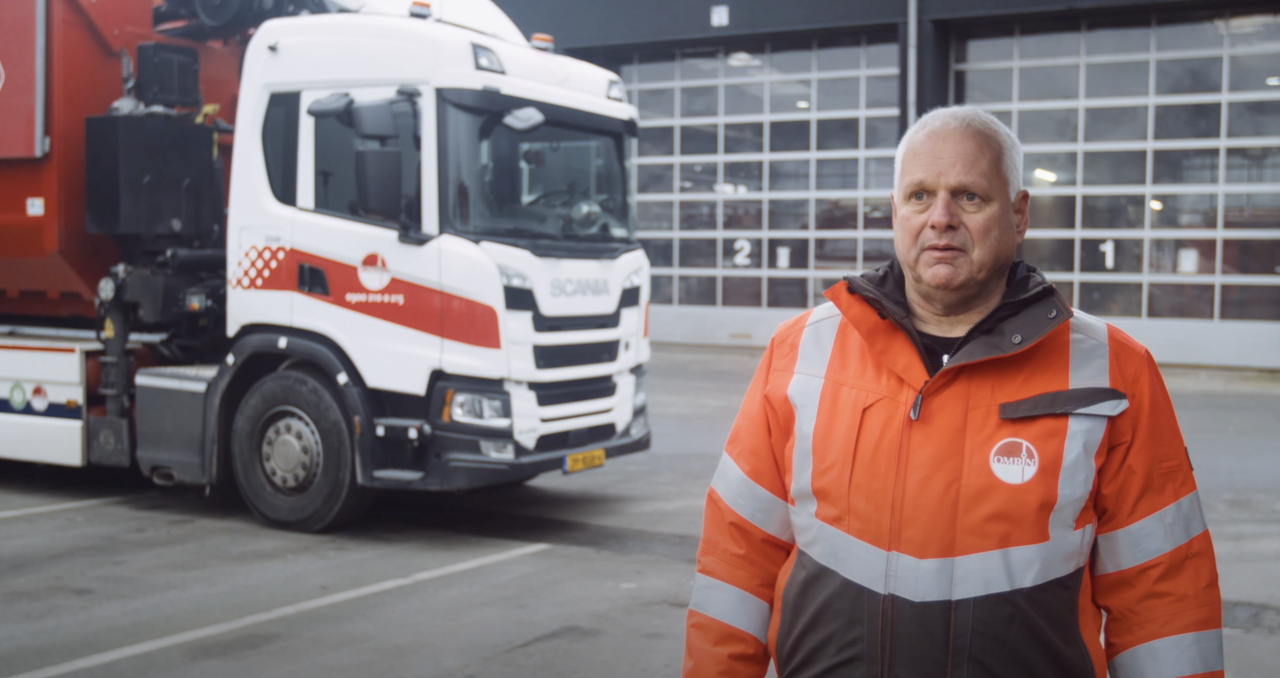
Omrin Waste Management’s fleet runs 74.4% fossil-free on Bio-CNG.
- Projects
- Waste collector Omrin – "Together for a clean and sustainable world."
Vesting
Heerenveen (NL)Clean fuels
Bio-CNGThe world’s population is growing, and resources are becoming increasingly scarce. To leave a liveable planet for future generations, we must take care of what we have. In a circular economy, waste no longer exists. Products are designed more efficiently, and materials are reused as much as possible. This also applies to clean fuels made from waste, thanks to a strong sustainable partnership between Omrin and OG.

Albert Vries (driver at Omrin): “Every day, I drive my waste collection truck fossil-free past our customers. In terms of pulling power, there’s no difference. It used to be different, but today’s engines are stronger, cleaner, and quieter. It really makes driving a pleasure – all for a cleaner world. Everyone notices it, and we’re setting an example for others. More and more lorries are running on green gas, which is a great development.”
Omrin (Frisian for “cycle”) is a waste and resources company active in Friesland, Groningen, the Veluwe, and the Rijnmond region. Omrin processes household waste from over 1.2 million people and 9,000 businesses, with the motto: “Building circular (waste) chains for the wellbeing of future generations.”
The goal?
To successfully close circular (waste) chains for the benefit of future generations. This involves actively reducing CO₂ emissions, cutting waste, and increasing the reuse of raw materials. Omrin also contributes to greater biodiversity and reduced social inequality. The word “(waste) chains” is used deliberately because achieving this goal means working not only within waste chains (with partners), but also beyond them, in broader communities and ecosystems.
Omrin works daily toward a circular economy and a more inclusive, biodiverse society. Together with 35 municipalities and dozens of partners, they help build sustainable ecosystems and communities. The partnership between Omrin and OG Clean Fuels is a textbook example of how to create real impact and scale. Waste is collected sustainably from households and businesses and processed in modern facilities. Every day, a large number of vehicles operate throughout the regions.
Almost all of Omrin’s vehicles now run on green gas from waste. 100% fossil-free. Cleaner, quieter, and more sustainable. This is the future: sustainable transport using innovative logistics and clean fuels. In partnership with OrangeGas, fossil-free driving is gaining momentum. With a broad network of refuelling stations, sustainable waste collection is ensured across all regions for the wellbeing of future generations.

Make your fleet
sustainable
Ready to make your transport fleet more sustainable?
Get in touch to learn more.
Frequently asked questions
Bio-CNG is the sustainable alternative to CNG (Compressed Natural Gas), which is produced by compressing fossil natural gas under high pressure. Unlike CNG, Bio-CNG is a renewable fuel, as it is derived from the fermentation of biodegradable waste materials such as sludge, organic household waste and manure.
Bio-CNG is a clean and highly versatile fuel, making it well-suited for transport operators working both regionally and internationally.
While passenger cars powered by (Bio-)CNG are still available, production has significantly declined in recent years. However, a wide range of used vehicles is still on the market.
Bio-CNG is the biological, non-fossil alternative to CNG (Compressed Natural Gas, or natural gas). LPG stands for Liquefied Petroleum Gas and is commonly referred to as autogas. LPG is a fossil fuel, produced as a byproduct during the extraction and processing of natural gas and crude oil.
One of the key advantages of Bio-CNG is that it is a ‘light gas’ and disperses quickly if released into the air. This makes it safe to sell at unattended fueling stations. LPG, on the other hand, is a liquid and heavier than air. If it escapes, it poses a risk of explosion. As a result, LPG may only be sold under supervision, and LPG-powered vehicles are often not allowed in certain underground parking garages and tunnels.
ChatGPT zei:
The driving range depends on the truck but typically falls between 500 and 1,000 kilometers. This is a fairly wide range, as many operators choose to increase the tank capacity when purchasing their truck. The additional tanks are often installed at the rear of the vehicle.
Gas quantities are measured in kilograms because gas is not a liquid and therefore cannot be measured in liters.
Driving on and refueling with Bio-CNG is very safe—it's even safer than traditional fuels. Bio-CNG is less flammable, lighter than air, and disperses quickly if released. For this reason, it can be safely used at unattended fueling stations.

